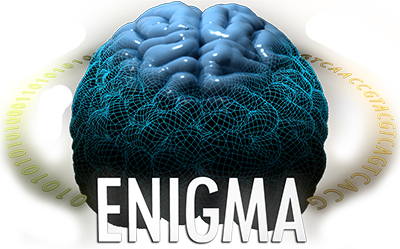Frequently Asked Questions about ENIGMA
- What are the requirements for joining ENIGMA?
ENIGMA members are multi-disciplinary scientists from all over the world with research projects on neuroscience, clinical psychiatry, and genetics. The sole requirement for joining ENIGMA is access to neuroimaging data with the cohort PI’s permission. Structural MRI is most widely used, but there are many sub-projects in DTI, a new resting state fMRI project, and an EEG working group.
- Do I need to have genetic data?
Not at all, many sites join without genetic data. Because so many of the WG projects involve analyzing imaging data only, there are still many opportunities to become involved without genetic data.
- Will I have to send you my data?
Nope! Your data stays right where it is. Instead of collecting your scans and/or GWAS into a large database, ENIGMA provides analysis and quality control protocols to be run at your own site. Then, a meta-analysis of the summary statistics is performed. Some groups have progressed onto running mega-analyses with raw data, but this is entirely optional and on a group-by-group basis.
- How do I sign up?
To become a member of ENIGMA, first identify which working group(s) (WG) you would like to join. The working groups, which are collaborations of researchers studying a specific disease, genetic modality, method, or healthy variation, can be found here and are listed below. Each group has a chair who will serve as a point person and add you to the group. You are encouraged to reach out to the WG’s chair if you haven’t been in touch already, or we can introduce you. From there, the WG may require that members read and sign a memorandum of understanding (MOU) prior to participating in the on-going projects.
- What types of things does ENIGMA do?
All ENIGMA WGs contribute to the primary projects of GWAS in subcortical (ENIGMA2) and cortical (ENIGMA3) volumes. From there, the groups typically have a variety of projects in which to become involved. ENIGMA members are encouraged to submit secondary proposals, projects which they will lead, in their own WG or for a collection of groups. Interested in learning more about what secondary proposals have been accepted? Please explore our website’s WG pages or see below for just a sampling of the latest projects.
- How is ENIGMA organized?
The ENIGMA Consortium is organized into 33 working groups that study a specific disease, genetic modality, method, or healthy variation in the human brain. The consortium is led by Dr. Paul Thompson of the University of Southern California, who is the PI on the project and runs the ENIGMA-Central hub.
- I don’t see a working group in my research interest, can I start a new one?
Yes, new groups are being formed all the time! Please contact Dr. Thompson with any interest in starting a new group.
- I’m a researcher but not specifically interested in clinical neuroscience, should I still join?
Yes! ENIGMA has working groups in many areas, and they are not all specific to disease groups! We have various modalities, methods, and explorations of healthy control data as well. If you still don’t see a working group that applies to your research, new groups are being formed all the time! Please contact Dr. Thompson with any interest in starting a new group.
- I’m interested in joining but learning the new analysis method seems daunting OR I don’t have the appropriate resources to run the analyses. Should I still join?
Absolutely. It is the main goal of ENIGMA to break down the barriers that hinder collaboration and progression in imaging genetics. We are heavily focused on training and offer direct support to analyze imaging and/or genetic data using our protocol. We would also like to emphasize the flexibility of the network, especially in pooling resources to help it grow.
- How will I be given credit for my work on ENIGMA?
While there are some variations between WGs, we encourage, as best practice, that authorship and division of labor be specified at the onset of a project. One of the most exciting things in ENIGMA is to see the sheer number of authors on a publication, which shows the level of collaboration that has been achieved in getting the work to press. For examples of past ENIGMA related papers, see our publications page.
ENIGMA on social media:


